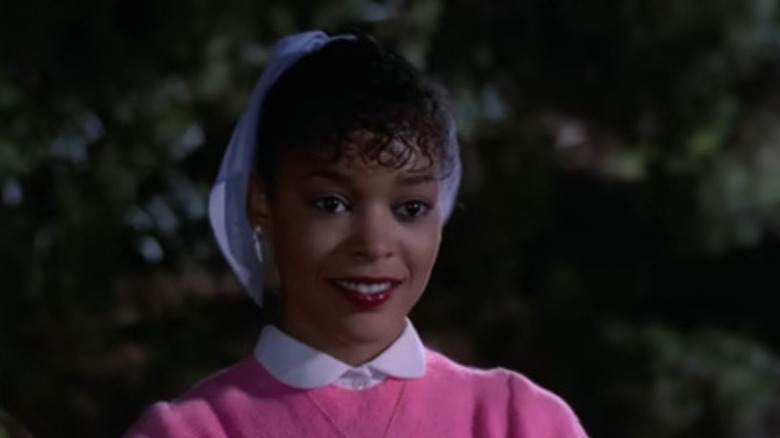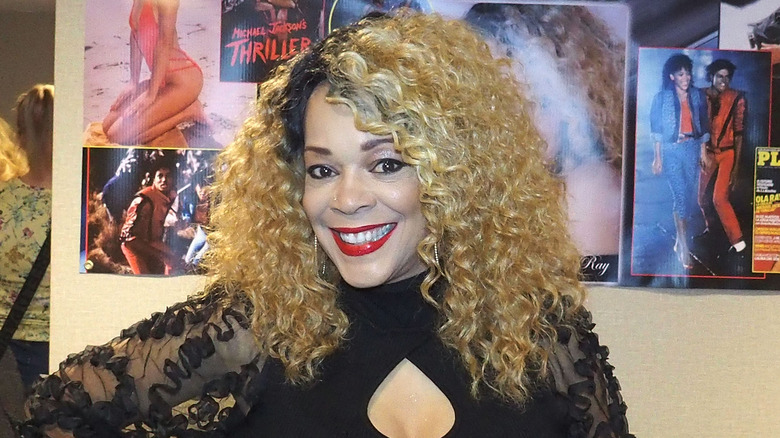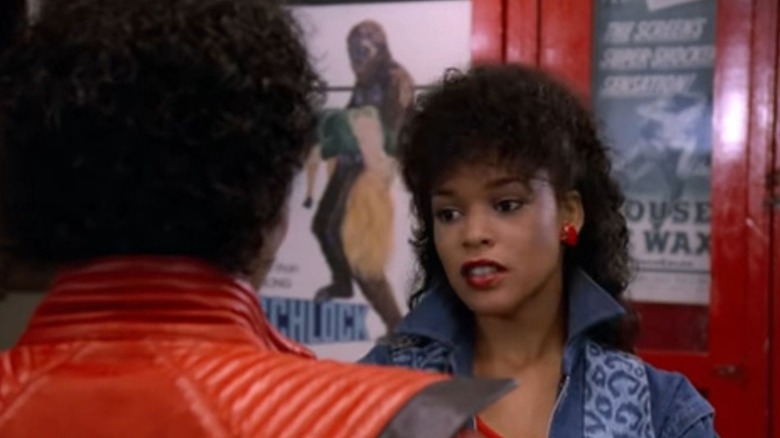Thriller Music Video Star Ola Ray Looks Unrecognizable 40 Years Later
The iconic "Thriller" music video, directed by famed filmmaker John Landis, didn't just set the bar with its cinematic flair — it also broke the bank as the most expensive music video production of its time, clocking in at a cool $500,000.Clocking in at nearly 14 minutes, the horror-themed mini-movie was inspired by Landis' horror-comedy classic "An American Werewolf in London." It starred Jackson and newcomer Ola Ray, a fresh-faced beauty with wide eyes who played both a 1950s girl and Jackson's modern-day date who found herself in the middle of a terrifying dance of the undead. Not only did "Thriller" play in heavy motion on MTV back in the day, but it went on to log more than 949 million views on YouTube. All of which put a lot of eyes on Ray, who alternated between a leopard-printed denim and 1950s ponytail and hairbow for her scenes in the iconic clip.
Until that pivotal moment, Ray worked as a model and actress, appearing in campaigns for Johnson and Johnson, McDonald's, Leggs Pantyhose, and Kentucky Fried Chicken. She also posed as Playboy Magazine's June 1980 Playmate of the Month, which was in stark conflict with Jackson's conservative Jehovah's Witness lifestyle. In an interview with Newsweek, Ray said Jackson was okay with her Playboy past. "I think John had seen my issue and that's how he chose me," she told the outlet. "He had already seen me in Playboy and that's why he decided to call me for the interview." After "Thriller" was released, Ray became one of the most recognized faces of the early MTV era.
Ola Ray's appearance has changed dramatically since she filmed the Thriller video
Ola Ray was just 23 years old when she shot "Thriller," so it's to be expected that she looks a bit different 40 years later. In 2019, BET posted then and now photos of Ray and noted that she was practically unrecognizable from her past as Michael Jackson's Zombieland date. Not only was her dark hair now strawberry-blonde, but the outlet shared reactions from fans who noted that Ray's complexion appeared to be dramatically lighter than it was back in 1983.
In a second BET post, commenters questioned if Ray had lightened her skin, as Jackson was accused of doing. However, after his death, the singer's lighter complexion was confirmed to be due to a pigmentation disorder known as vitiligo, an autoimmune disease that causes patches of lighter skin, according to the American Academy of Dermatology Association. As for Ray, some fans wondered if she just overdid it with her makeup. In a post on Lipstick Alley, user bloom wrote, "I hope she's just bad at makeup rather than bleaching." Ray has not spoken out about her lighter skin tone. She is active on TikTok, and many fans think she looks as beautiful as ever in her early 60s.
Ola Ray struggled after Thriller
Ola Ray has been open about her post "Thriller" struggles. Following her fast rise to fame amid the music video's staggering success, she became addicted to drugs. "I had people that I didn't know coming over and knocking on the door, trying to get an autograph, trying to get me to answer the door, trying to see me," she told the Daily Mail in 2019. "It got really, really crazy for me. ... I started having all these people come to my home and they wanted to do drugs and then all of a sudden I started using cocaine." In 1993, Ray entered the Tarzana Treatment Center for help with her addiction.
In addition, "Thriller" made Ray famous but not rich. She was only paid $2,500 for her part in the video, and she didn't receive any royalties for years. She ultimately sued Jackson and was later awarded $75,000 in back payments. Still, she paid tribute to Jackson 30 years after "Thriller" was released in a video for her first single, "Remember." In the video, she mimicked the famous "Thriller" zombie dance — and there was even a flashback to her 1950s persona from the original Michael Jackson video. In the intro, Ray described the video as "a tribute to Michael."
If you or anyone you know needs help with addiction issues, help is available. Visit the Substance Abuse and Mental Health Services Administration website or contact SAMHSA's National Helpline at 1-800-662-HELP (4357).



